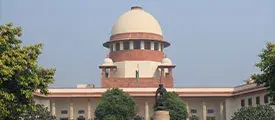Insolvency and Bankruptcy Code, 2016
The Insolvency and Bankruptcy Code, 2016 (hereinafter referred as the Code) has emerged as one of the fastest debt recovery mechanisms in India. The recovery rate for cases resolved under the IBC has outpaced other resolution mechanisms such as the Debt Recovery Tribunal, Securitisation and Reconstruction of Financial Assets and Enforcement of Securities Interest Act, and Lok Adalat. It has shifted the balance of power to the creditor from the borrower. The fear of losing assets to a failed resolution process has instilled a sense of urgency and seriousness amongst defaulter. Even though there is no express bar in the IBC on using the CIRP just to recover debt owed under a contract, the National Company Law Tribunal (‘NCLT’), National Company Law Appellate Tribunal (‘NCLAT’) and the courts have made a conscious effort to uphold the fundamental intent of the IBC, i.e., maximising the value of entities in the process of resolution.
Benefits under IBC
Dr. M.S. Sahoo, Chairperson of the Insolvency and Bankruptcy Board of India (IBBI), citing the effectiveness of the Code said, “Any other option of recovery or liquidation would have recovered at best Rs 100 minus the cost of recovery/ liquidation, while the creditors recovered Rs 207 under the IBC. The excess recovery of Rs 107, in addition to rescue of the companies, is bonus on account of the IBC.”[1]
Citing an RBI data, he said it indicates that in 2018-19, of the total amount involved banks recovered 5.3% through Lok Adalats, 3.5 % through DRTs (Debt Recovery Tribunals), 14.5% through SARFAESI (Securitisation and Reconstruction of Financial Assets and Enforcement of Security Interest Act) and 42.5% through IBC.[2]
There are numerous benefits for which creditors choose to use the IBC against the defaulter. To begin with it is a cheaper alternate. Filing a suit for recovery would range from thousands to lakhs of rupees depending upon the value of debt whereas, the fee for a financial and corporate creditor to initiate resolution proceedings is Rs.25,000 and for operational creditor it is Rs.2,000. Secondly, it is a speedy mechanism, the statutory period prescribed under the Code to complete a resolution process is 180 days whereas, a suit could take years and cases which are appealed could further delay the whole execution process. Lastly, the Code may be used as a coercive tactic to compel the debtor to repay because of the threat of tainting the debtor’s reputation and that of the business.
Objective of the Code
An ideal resolution plan read with the objectives of the Code should resolve insolvency, maximise the value of the corporate debtor’s assets and promote entrepreneurship, but it should not be in the form of a recovery. The NCLAT differentiated between recovery and resolution, in as much as recovery is an individual effort by the creditor to recover its debt in a process that places the debtor and creditor on opposite sides opposed to the collective deliberation of the creditors and debtors together in the Committee of Creditors during resolution. Recovery strips the corporate debtor of its assets while a resolution is an effort to keep it afloat.[3] While it has been stated time and again that the Code is not a mechanism for recovery, its practical application in various contexts continues to be in the nature of a recovery procedure.
Procedure under the Code
- Initiation: When a recovery amount is of one crore or more, the resolution process may be initiated by the creditor. This process can be triggered by way of filing an application before NCLT. Then the interim insolvency professional is appointed who administers the process. The professional provides financial information of the debtor from the information utilities to the creditor and manage the debtor’s assets. This process lasts for 180 days and any legal action against the debtor is prohibited during this period.
- Decision to resolve insolvency: A committee consisting of the financial creditors who lent money to the debtor will be formed by the insolvency professional. The creditors committee will take a decision regarding the future of the outstanding debt owed to them. They may choose to revive the debt owed to them by changing the repayment schedule or sell (liquidate) the assets of the debtor to repay the debts owed to them.
- Liquidation: If a resolution decision is not taken in 180 days or revival of is not possible, the debtor’s assets go into liquidation. When the debtor goes into liquidation, an insolvency professional called liquidator, administers the liquidation process. The liquidator shall here evaluate the value of the assets and then distribute the assets amongst the creditors. Proceeds from the sale of the debtor’s assets are distributed in order prescribed under the Code.
A dilemma for creditors
The Code, 2016, was enacted as one of the most important pieces of economic legislations dealing with reorganisation and insolvency resolution in a time bound manner for maximisation of assets. However, the IBC has fallen prey to individual debtors using it as a tool to recover debt owed under a contract. In doing so, they are substituting the Code for other legally appointed debt enforcement mechanisms such as forums under the SARFAESI Act, 2002, and Recovery of Debts Due to Banks and Financial Institutions Act, 1993, as well as money suits. While the IBC appears to discourage such actions in its spirit and overarching purpose, there is no express bar on the same in the text.
Creditors using insolvency proceedings to coerce a debtor to pay clearly shows how they are taking advantage of the omission. Employing insolvency as an alternative for debt collection mechanisms brings illegitimate applications before the NCLT and NCLAT at a time when lack of judicial infrastructure and delayed judgments are plaguing the IBC framework. While courts and tribunals have recognized and discouraged this kind of initiation of insolvency proceedings, the absence of an explicit bar on the same is a glaring lacuna in the law.
Is IBC the right mechanism for debt recovery?
The Preamble of the IBC is carefully worded to describe the core purpose of the law to be ‘reorganisation’ and insolvency ‘resolution’, omitting the word ‘recovery’.[4] Thus, the Parliament made a conscious effort to ensure that the fine line of difference between ‘resolution’ ‘and recovery’ is not blurred. While the former deals with assessing the viability of the business collectively and restructuring it if the situation permits, the latter is concerned with enforcing a specific contract and is an individual action. The fact that judgments under the IBC have tried to prohibit recovery is in consonance with the purpose of the Code, which was born because pre-existing laws like the SARFAESI and the RDDBFI gave rights only to banks. Scattered masses of individuals and financial entities that purchased corporate bonds were left without a remedy as they were not covered under any vigorous framework.[5]
Section 9(5)(ii)(d) of the IBC, which prohibits CIRP applications in cases of a pre-existing dispute between the operational creditor and the corporate debtor, has often emerged to be a helpful tool to weed out actions by operational creditors that are purely for debt recovery. In Transmission Corporation of AP Ltd. v. Equipment Conductors and Cables Ltd.[6], a Section 9 application was filed before the NCLT, Hyderabad which was dismissed on the grounds that the ensuing litigation between the parties qualified as a pre-existing dispute which bars the NCLT from admitting an application under Section 9. The NCLAT and the Supreme Court upheld the decision and observed that the pending litigation was an evidence of pre-existing dispute and when recovery through other mechanisms are unsuccessful, this Code couldn’t be used as an alternative for a debt recovery.
Section 65 of the Code prescribes a penalty ranging from one lakh to one crore rupees, for those who initiate the CIRP or liquidation fraudulently or with a malicious intent to defraud any person[7].
A fair reading of the section would imply that an application filed under the Code for recovery will fall within the scope of malicious initiation of proceedings. A Supreme Court Bench[8] stressed upon the point that Section 65 of the Code is not meant to negate the process under Section 7 or 9 of the Code. The Code provides stringent action under Section 65 against the person who initiates proceedings under the Code fraudulently or with malicious intent, for the purpose other than the resolution of Insolvency or liquidation under the Code[9].
Conclusion
Even though it is now understood that the spirit of the Code is to discourage recovery, it does not contain any explicit provisions to that extent. This may lead to inconsistencies in the application of the law. The Supreme Court has been at the forefront of disallowing applications that seek to misuse the provisions of the Code in a manner that gives them an easy way out of using the correct forums of debt recovery. Evidently, the appropriate forums in this regard are mechanisms under SARFAESI and RDDBFI as well as money suits. Section 65(1) of the IBC has already taken a step in this direction by penalising malicious initiation of proceedings.
Related articles
Impleadment of MCA in every Insolvency and Company matters not mandatory- NCLAT
Insolvency in times of COVID-19
[1] Recovery through insolvency process better compared to other options: IBBI chief M S Sahoo. (2020, March 2). The Economic Times. https://economictimes.indiatimes.com/news/economy/policy/recovery-through-insolvency-process-better-compared-to-other-options-ibbi-chief-m-s-sahoo/articleshow/74439865.cms?from=mdr
[2] Ibid
[3] Binani Industries v. Bank of Baroda, (2018) CA (AT) (Insolvency) No. 82, 15.
[4] Insolvency and Bankruptcy Code, 2016, Preamble.
[5] K. Kishan v. Vijay Nirman Co. Pvt. Ltd, SCC OnLine SC 1665 (2017).
[6] Transmission Corp. of AP Ltd v Equipment Conductors and Cables Ltd, SCC OnLine SC 2113, 4 (2018).
[7] Insolvency and Bankruptcy Code, 2016, S.65.
[8] Amit Katyal v. Meera Ahuja, 2020 SCC OnLine NCLAT 748
[9] Ibid.








